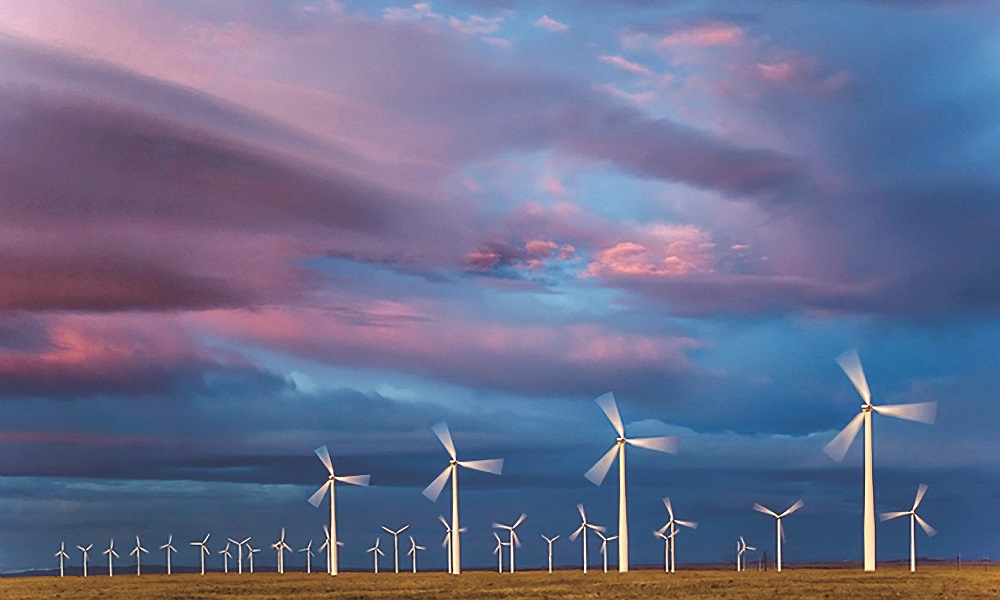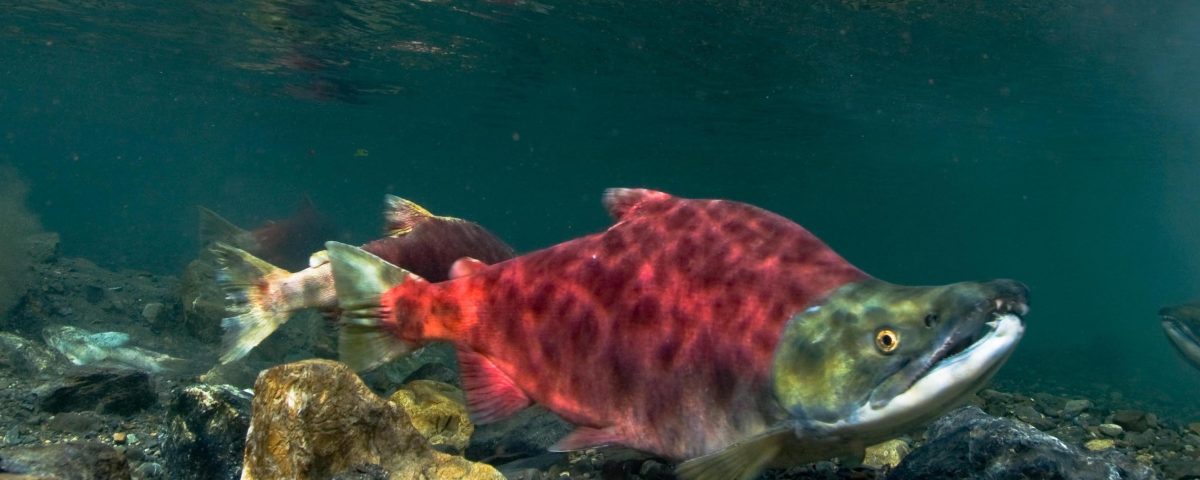
Renewable Energy and Barging Industries Have Changed
June 24, 2020
Harnessing the Power of Community for the Common Good
July 7, 2020Migration Through the Eyes of a Salmon
Surmounting man-made obstacles complicates this arduous journey
By Dominic Triolo, Intern
S ix years ago, I hatched from a pink, translucent egg in the crisp waters of the upper Snake River. My mother sacrificed her life to give birth to me just like her mother did for her, and soon, I will do the same for my children. When I first hatched, I lived in the gravel of the stream, surviving on nutrients from my egg and forming black vertical stripes, called parr marks, to help camouflage me from the many birds and larger fish that like to eat juvenile salmon.
At three weeks old, I emerged from my redd, the gravel nest that my mother made for me. I spent my first year of life in the Snake River below Hells Canyon, where I learned how to snatch insects off the surface of the water and how to forage aquatic invertebrates. I also learned to “imprint” my stream by memorizing the scent of the water created by the rocks, soil, plants and other aquatic organisms so I could eventually find my way back home.
As I grew, I explored the main stem of the Snake River, hiding from the otters, bass, and birds that pose a constant threat to my life. I sought refuge from these predators in deep pools and among increasingly rare debris in the river, like fallen logs and branches. Not so long ago, logs would back up on the river and flood areas upstream, depositing sediment and creating vital habitat for me. Unfortunately, these log jams make shipping nearly impossible and most of them have been cleared to support barge transportation. This made it hard for me to find good hiding spots and sediment-rich habitat in the stream as a young salmon.
When I turned one year old, my parr marks began to disappear, alerting me to the fact that my first great journey would soon begin. I knew it was time to go to the ocean.
Under natural conditions, it would be an arduous journey: over 450 miles of river fraught with predators, rapids, strong currents, and changing salinity that culminates in a rapid biological adaptation to the ocean. Unfortunately, man-made obstacles such as agricultural runoff, heat pollution, stagnant water and dams further complicated my voyage.
8 dams blocked my path. To navigate them, I wriggled through spillways. Many of my brothers and sisters couldn’t find the spillways or were sucked into the turbines and killed. I even saw some of the fish who made through spillways get eaten by sea lions as they were released downstream.
While trying to find safe passage around these giant blockages, I was exposed to a range of pesticides and chemical fertilizers from agricultural runoff. I also experienced a lot of hot water during this journey. I swam as quickly as I could, wishing for a current that could carry me downriver without having to use all of my energy. By the time I made it into colder, faster stretches of river, many of the fish I was travelling with had died from disease or exhaustion. I felt lucky to have made it.
Those of us that survived to reach the estuary began transforming our gills to adapt to the new, salty environment. We also shed our parr marks in favor of silver sides and white bellies. Thus, I developed better camouflage for blending into the surface water of the open ocean, protecting me from a new set of predators. Sharks, sea lions, seals, and whales were all on the hunt as I grew to well over 50 pounds.
Fuelled by a new diet of herring, sand lance and squid, I traveled to the icy waters of Alaska, where I lived for 5 years before beginning the final chapter of my life: the journey back to the upper Snake River. I ate as much as I could to store energy. I knew that I would need a substantial amount of energy to last my entire migration upstream. With my new hook-shaped upper lip and deep red coloring, I set out on my final quest to find my home stretch of stream for spawning.
Many of the friends and family I first came to the ocean with joined me. The true test was successfully passing through the same 8 dams that blocked our path when we were young. Together we fought through a gauntlet of over 100 sea lions below the Bonneville dam.
We were forced to bump and tumble through fish ladders to go up and over each dam. Especially high or low waters can render fish ladders useless, so we had to wait for the opportune time to enter each one. Sometimes, we simply could not find the correct route and I grew anxious as the race against time pressed me to expend more of my limited energy supply searching for the right route.
Meanwhile, blistering water temperatures killed almost half of us along the way. Only by luck did I escape each of the 8 dams relatively intact, but I could feel my body growing more weary and vulnerable as I passed through each one.
I sustained several injuries and have parasites feasting on my red-brown flesh. Some of my fellow fish are sick with diseases they can’t fight off because of their lack of energy and nutrition. But I can tell from the familiar scent of the water that I have finally arrived at the same stretch of the upper Snake where I hatched.
The relief I feel upon my arrival is overshadowed by the anguish of seeing so few of the fellow salmon I hatched with. It is not the jovial reunion that I had anticipated. It is not the massive celebration that our ancestors enjoyed.
Soon I will spawn and then, within two weeks, I will die, having achieved the goal that every salmon dreams of but fewer and fewer have the opportunity to accomplish. My body will provide valuable nutrients to the river ecosystem and my children will hatch into a world that will make their quest even more difficult than my own… unless humans take a stand.
Imagine how many like me would be able to spawn without the lower Snake River dams. Imagine how many spawning areas could exist along the hundreds of miles of river currently made inaccessible. By removing the Lower Granite, Little Goose, Lower Monumental, and Ice Harbor dams, my community could be saved; we’d only have to travel through half as many dams during our migration.




